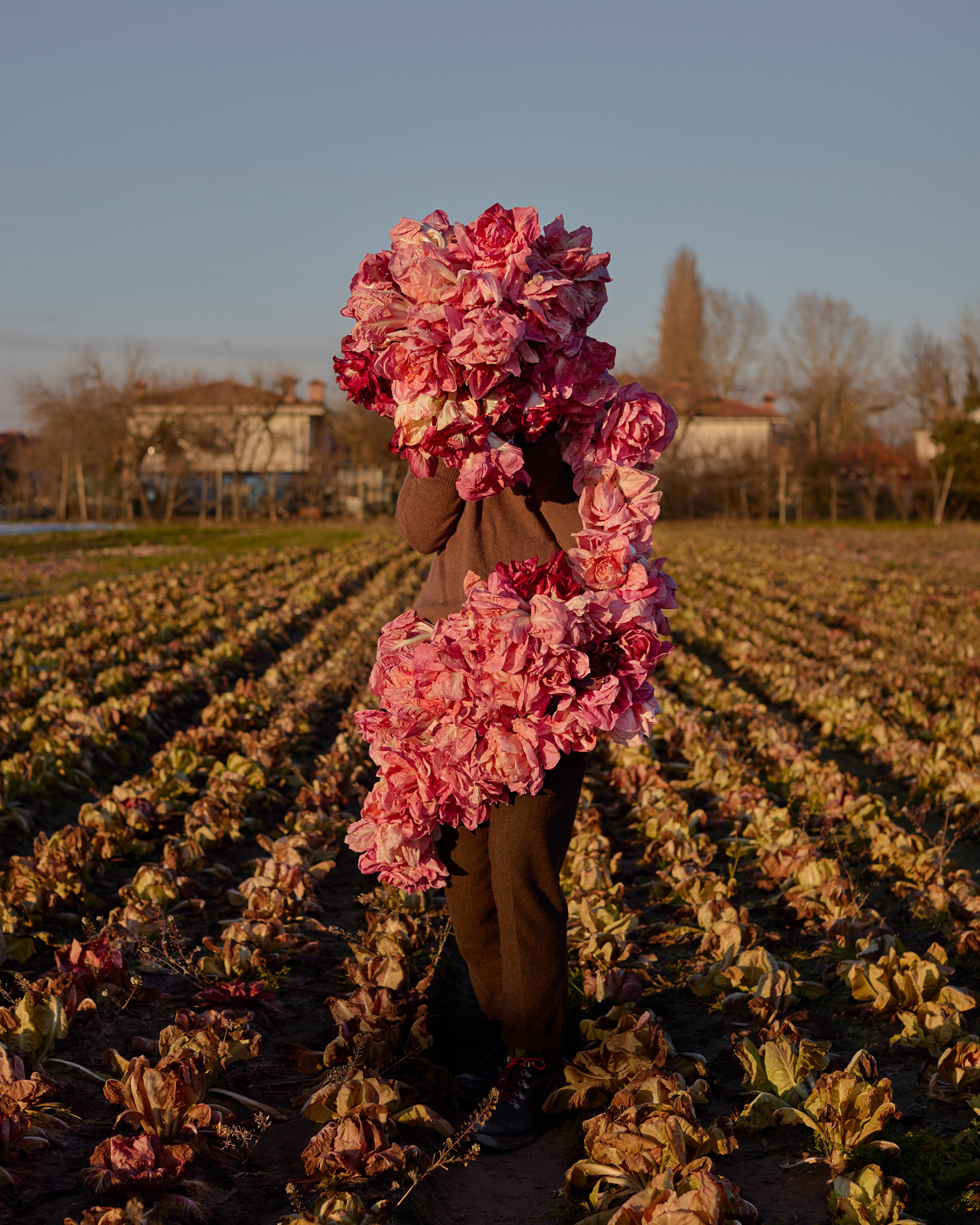IN CONVERSATION WITH FRIDA KIM
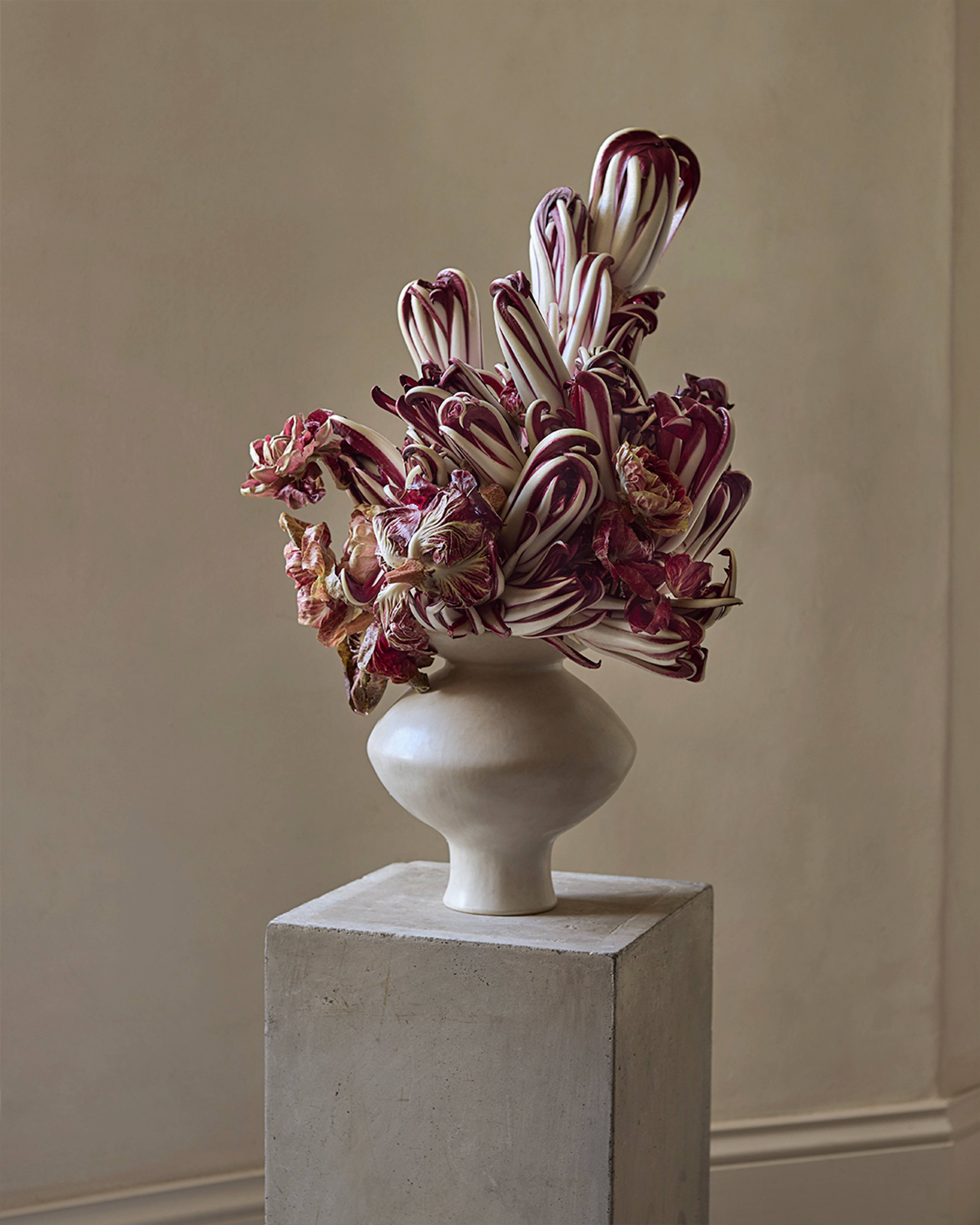
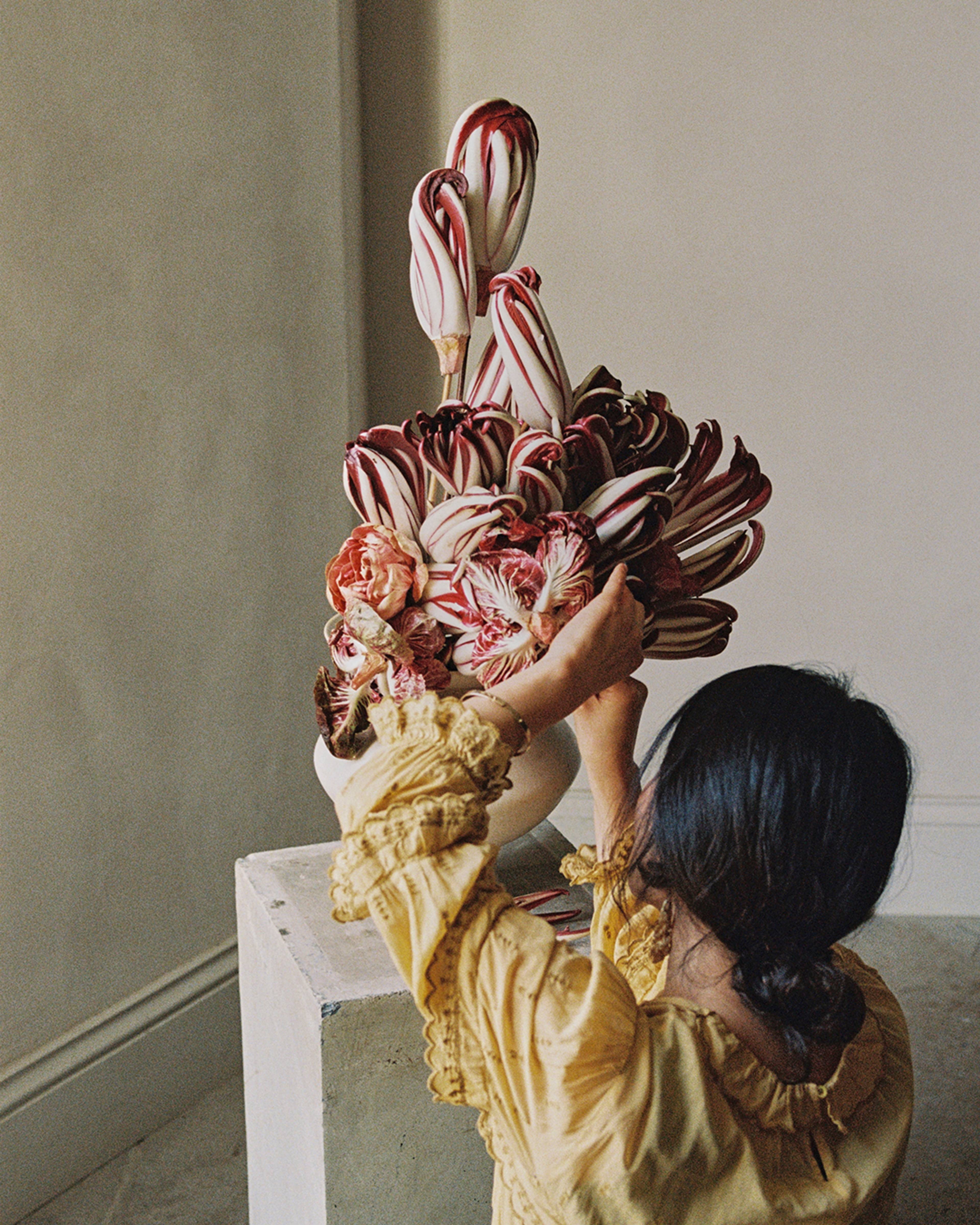
Frida Kim for Radicchio, not Roses 2024 Campaign
Seasonality adds a dynamic and evolving element to our work, especially when we work with local flowers and materials. It brings another level of inspiration and more importantly a deeper sense of beauty. It connects us to nature's cycles, influencing our experiences and moods.
FRIDA KIM
This Valentine’s, London florist Frida Kim brings our Radicchio, not Roses message to life with her floating arrangement — Antonello's Pink Radicchio and Rosella di Lusia, strung asymmetrically with the less-is-more aesthetic typical of ikebana floristry.
Learn about her inspirations, get her styling tips and find out why ikebana is a philosophy that goes well beyond the vase.
It was your floating installations that first caught our eye. Can you tell us more about your style and inspirations?
Playing with individual leaves, watching them unfold into bird-like shapes was my first joyous and creative start. As a child, I adored clouds for the endless game of finding animals in their shapes. The ever-changing forms and colours, influenced by the weather, always brought joy. I could happily watch them all. I am also a big fan of mobiles, especially Alexander Calder’s creations.
Were there any challenges in putting together this installation?
Hanging each head of radicchio individually makes it difficult to envision the whole and the natural movements they’ll create. But it also adds an extra layer of interest. The most challenging part was to capture them in a photo.
What did you think couldn’t quite be captured by the camera that was felt in the room?
The play of light coming from behind unveiled the true beauty of the veins in the plants. It cast a mesmerising glow on the intricate details which was hard to capture.
Ikebana goes beyond floral arrangements; it's like a meditative practice reflecting the essence of nature and the different seasons through harmonious and balanced flower placements. It’s about discovering and sharing your inner self.
FRIDA KIM
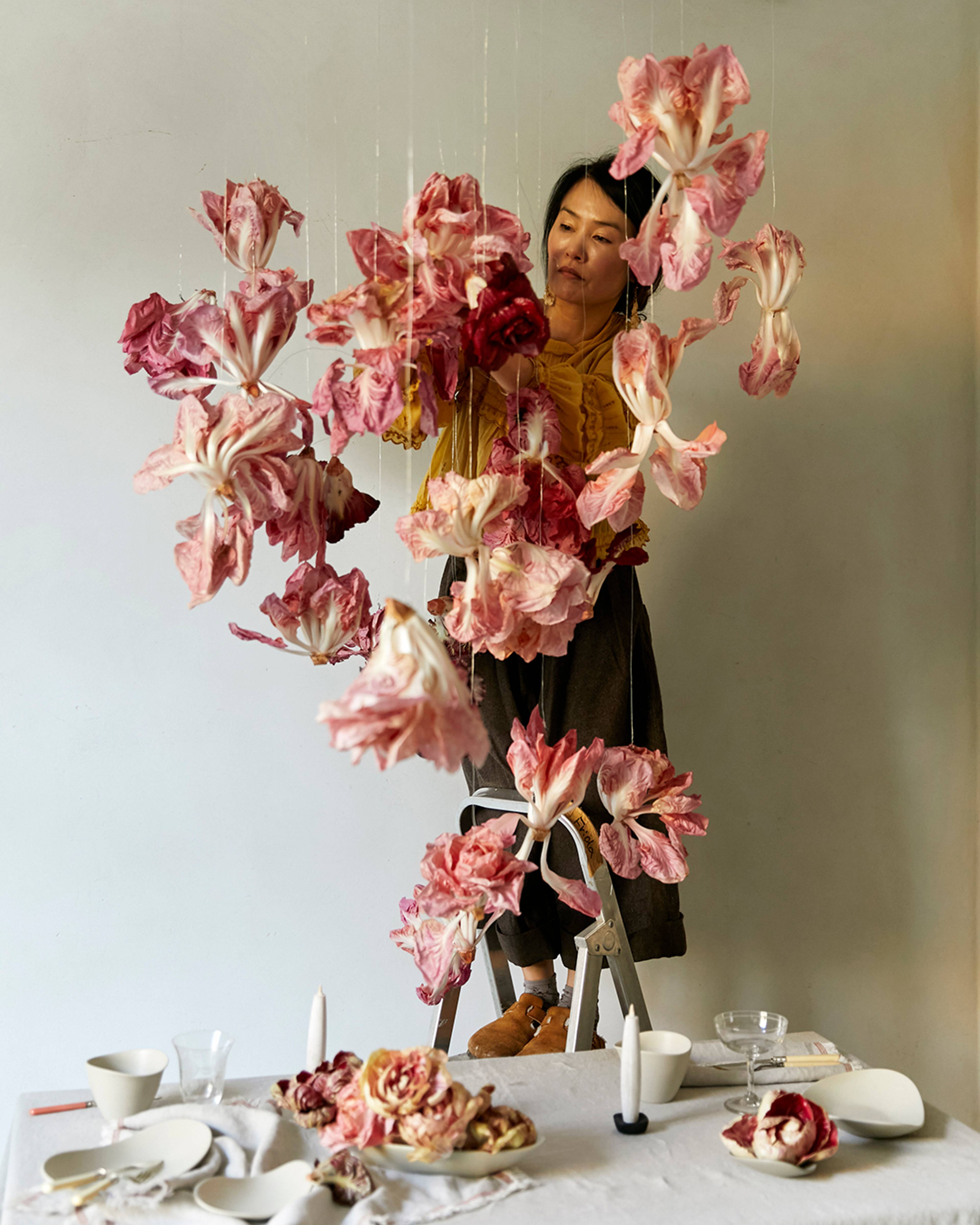
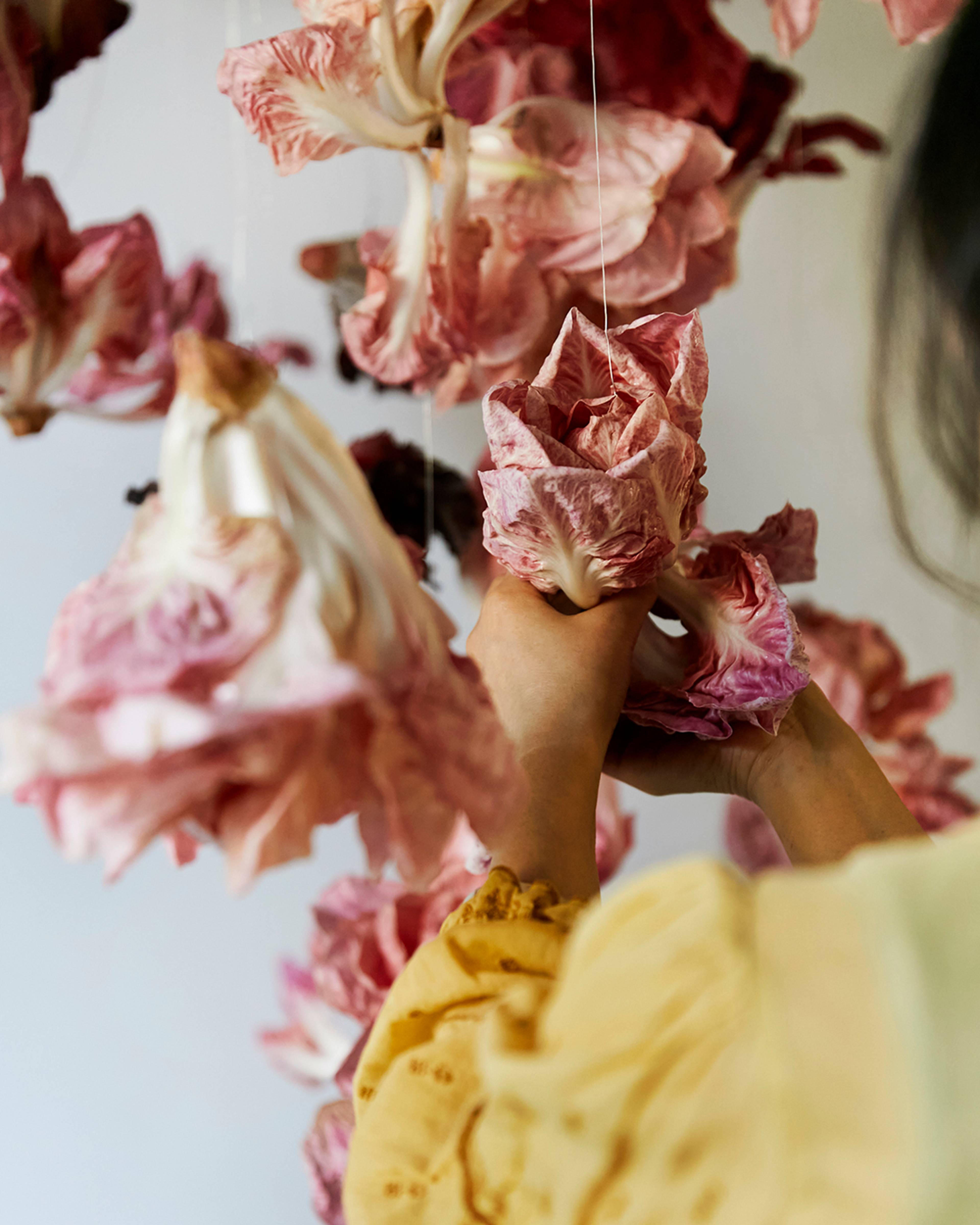
Were you already familiar with radicchio?
Yes, and I remember the colours being very special and beautiful. A long time ago one of my first flower teachers loved it very much. She always said they are more beautiful than flowers. I’d seen your previous Radicchio not Roses campaigns — really inspirational. I am so happy to be part of it now.
You say that flowers tell stories, and you find beautiful ways to tell these stories. What story were you telling here?
A romantic and celebratory story. Radicchio looks like a flower. I'm a fan of movement, and when I was experimenting with a sample, I hung one to observe it in movement. The way each slowly opens up is so exciting. I imagined that it could be a captivating cloud-like installation.
Do you find floristry a challenge at times of dearth in the natural world? If so, how do you work around this?
Certainly, but sustainability has become our responsibility. I look to local seasonal flowers as well as seasonal fruits and vegetables, which serve as truly inspiring sources of creativity. If you want to stick with flowers in February, snowdrops, narcissus and hellebore are lovely choices. A branch of magnolia or blossoms add a touch of enduring beauty, even if they take time to bloom.
All elements in balance — Frida’s styling tips.
Like flowers, radicchio are fresh products. How would you preserve this while creating a display?
Just a few hours on display is best. The Tardivo is the most robust so you can display it for longer. When they are exposed to the light, the radicchio start to darken in colour. Have a water spray handy to keep them looking fresh.

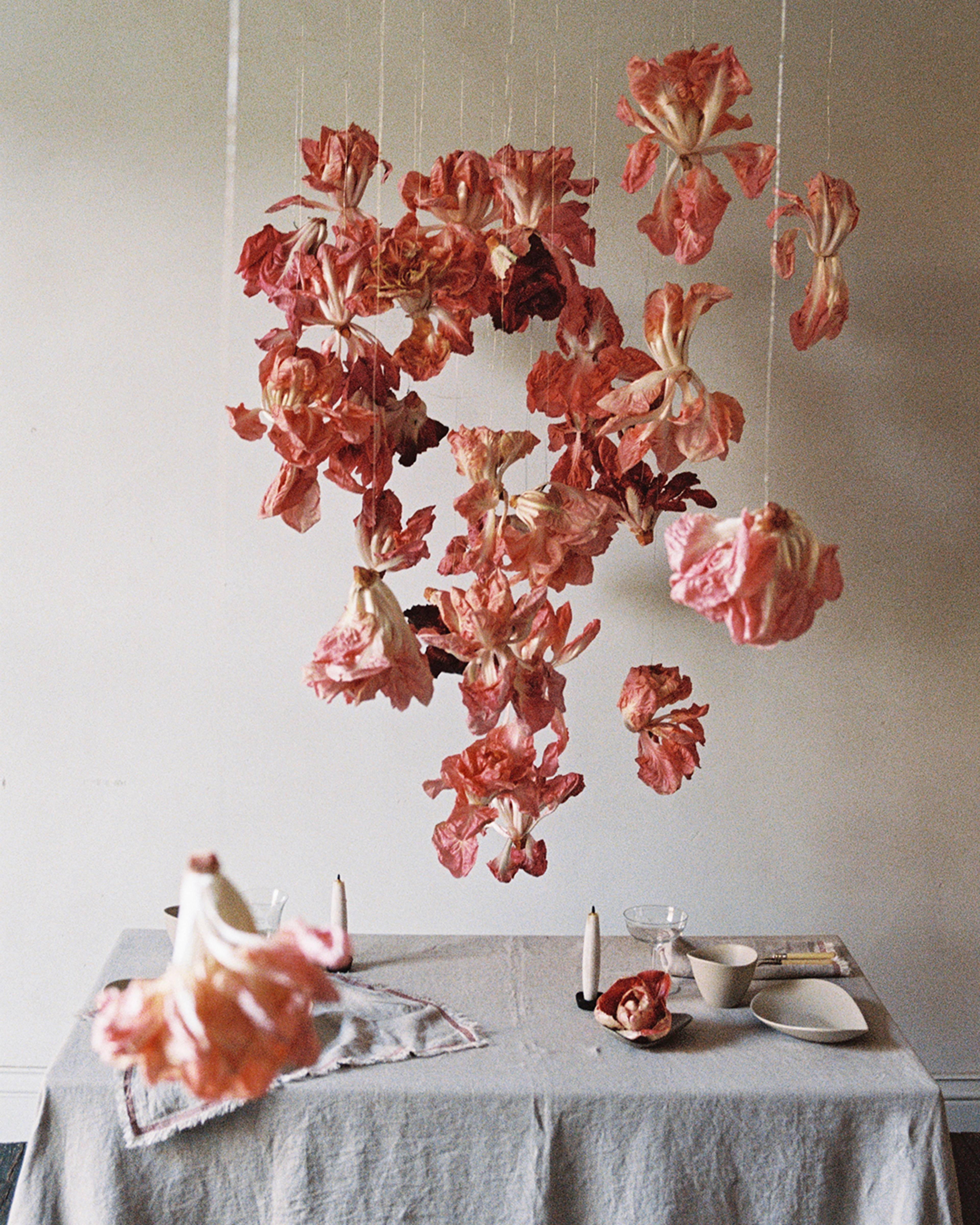
Where would you start with an at-home floral arrangement?
I like to consider the vase, the placement and the flowers — or radicchio — equally. At home, I put arrangements in our kitchen or entrance and I tend to use simple glass vases or ceramics. I make sure the fresh produce fits with the space and vessel, as a unified display. Have some useful tools at your disposal, like a kenzan (flower frog).
Are there any golden rules in floral arrangement?
There are no golden rules; everybody has their own way of expressing their creativity, with a different feeling and eyes of beauty. So whatever feels right to you is the most important thing. I love to work with seasonal materials; this spring I’ll use a lot of branches and blossoms.
How would you serve it after displaying it?
My favourite is a delicious radicchio salad with orange segments — a refreshing combination of bitter, sweet, and tangy flavours.
Stories
Voir toutWe exist to fix the food system.
People are more cut off from the origins of their food than ever. This makes flavour, nutrition and farming practices that protect the planet, almost impossible to find.
By working directly with growers, we create a more sustainable way forward for farming. By giving everyone the tools to understand the power of our food choices, we empower everybody to become drivers of change.
Now is the time for action. Join the food system revolution.

Go beyond four seasons
Each fruit and vegetable has its own season, with subtle shifts which happen every day. Follow their microseasons to unlock flavour at every stage.
WHAT’S IN SEASON?

Know where your food comes from
We know the name of the people behind everything we source. Recognise their growing artistry to find out exactly where your food comes from (and why that matters).
MEET THE GROWERS

Make your diet diverse
Our growers work with varieties chosen for quality and nutrition, not yield. By selecting their crops you keep heritage seeds in play, add to ecosystem biodiversity and preserve unique flavours.
PEAK SEASON BOX
United Kingdom
© 2025 Natoora Ltd.
